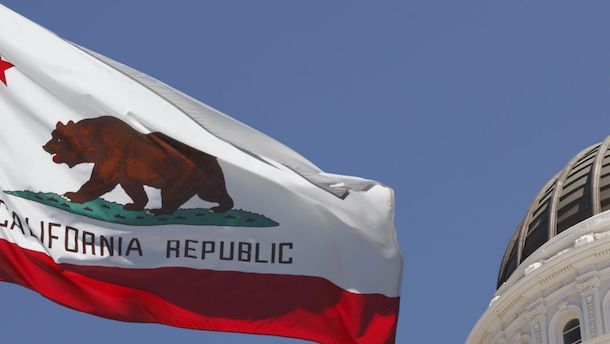Much like the members of the European Union, each of America's states has its own needs to fulfill. Technological progress has given some states an edge in pursuing their goals, but it has also left behind regions that were once among the most prominent forces in U.S. politics — including the country's flourishing breadbasket, the American Midwest. And as the socio-economic gap between different parts of the country has widened, so have their policy preferences.
By design, political discourse and debate are woven into the very fabric of American governance. But rarely do rifts among states spill into foreign policy and global issues in a substantial way. That may not be the case for much longer, however, as U.S. President Donald Trump's populist appeals attract strong allies — and even stronger opponents — to the White House.
Scraping Off the Rust of the Midwestern Belt
History is littered with examples of periods when "national values" meant something different to every U.S. citizen. The electoral cycle acts as a rough gauge of the extent of these differences, swinging the pendulum of partisanship back and forth along the political spectrum with each vote. The magnitude of this arc tends to broadly coincide with the level of discord in the country at any given point in time. During the moments of deepest division, states dominated by the minority party often try to use the degree of self-determination that the U.S. Constitution grants them to seek even greater autonomy.
Until now such moments — at least those triggered by economic issues — have been largely absent from U.S. history since the end of World War II. Throughout much of the 20th century, the U.S. steel industry's heyday, states with long traditions of manufacturing such as Ohio, Indiana and Michigan thrived. The booming region, coupled with the prosperous agricultural corridor that rests along the Greater Mississippi River Basin, fueled the United States' rapid ascent among the ranks of the world's nations.

But on the eve of the 21st century, the success of these steel giants began to wane amid the rise of container shipping, industrial automation and globalization. Factories closed and production stalled across the region now known as the Rust Belt, which had lost the competitive advantage afforded by the Industrial Revolution to the technological revolution sweeping throughout the globe. A crisis of the American middle class followed, rallying support for federal policies that promised to turn back the clock to better times. The voices of those who felt forgotten by the administration of former President Barack Obama, which prized globalization and multilateral trade deals, grew louder and louder. Last year, their collective strength pulled the political pendulum back toward them with the election of a candidate who vowed to put their needs first.
California Takes Up the Banner of Autonomy
This reversal of fortunes did not sit well with California, the country's most populous state. Unlike its Midwestern peers, California didn't hit its economic stride until the end of the 20th century. Prior to the advent of container shipping, it had no means of tapping into the economies of scale in manufacturing that allowed states along the Great Lakes and Mississippi River to flourish. So when American industry began to decline in the 1970s, California emerged relatively unscathed, eventually becoming the world's sixth-largest economy and a leading tech hub. Now home to some 10 million immigrants and a culture that embraces innovation, California's political stances are much different than those of Trump's constituents in the American Midwest, particularly on matters related to the environment, energy, immigration and the tech sector.
California and its governor, Jerry Brown, have led the charge to advance climate change policy under the Trump administration. After the president announced his intention to abandon the Paris Agreement on climate change, Brown — along with a handful of other state leaders, cities and corporations — pledged to maintain his state's participation in the deal by creating cooperative partnerships and enacting or enforcing state laws in line with the accord's goals. Not long after the announcement, the governor traveled to China to attend a clean energy forum and hash out plans for informal collaboration between California and Beijing on green energy and environmental protection.
Meanwhile, states like California have gone head-to-head with White House over the tabling of another Obama-era initiative on the environment: the Clean Power Plan. Scott Pruitt, the chief of the Environmental Protection Agency, announced on Oct. 9 that he had officially begun the process of repealing the bill, which has been stalled in court battles with numerous red states since its passage. Ironically, blue states will likely use the same tactics to block the progress of any replacement regulation that Republican lawmakers propose. Either way, the economic and technological considerations that inform states' decisions on utilities, power generation and energy use will gradually push them to adopt policies that are in line with both the Paris accord and the Clean Power Plan, regardless of the United States' formal participation in them.
Legal disputes between state and country haven't been confined to environmental issues, either. Over the past year, immigration has proved a serious point of contention between the White House and a handful of states, including California. (Perhaps this is unsurprising, since nearly a third of California's residents were born on foreign soil.) Wielding the power of the executive order, Trump has placed travel restrictions on citizens of nine different countries while bolstering the enforcement of immigration laws, resulting in an uptick in arrests this year. At the same time, disruptions to visa programs and the Deferred Action for Childhood Arrivals policy have led to an outcry from the tech and business communities. Should the visas that enable these sectors to recruit the world's best and brightest remain uncertain inroads into the country, the innovative tech sector may dig its heels in deeper against the president's immigration policies.
California has already taken its protection of migrants a step further, declaring its status as a sanctuary state in early October. The move will limit the extent to which Californian officials, by law, must cooperate with federal immigration enforcement officers. The Trump administration has threatened to withhold all federal funds from such sanctuaries, though some commentators have argued that doing so would be tantamount to coercion by the federal government (and therefore would not be permitted). The final verdict will likely rest with the country's nine Supreme Court justices.
A Flaw in the White House's Foundation
Though immigration and environmental issues have certainly grabbed the most headlines, Trump's trade policies have best exposed the competing interests that have long driven a wedge between rural and urban states. At first glance, one might expect states that are heavily reliant on foreign trade to balk at the protectionist rhetoric, renegotiations and punitive economic measures that have characterized the first 10 months of Trump's presidency. But many of the states whose exports and imports make up the largest share of their gross domestic product are also the onetime manufacturing behemoths of the American heartland, such as Michigan, Tennessee, Kentucky and Louisiana, that steered Trump from the campaign trail to the Oval Office.
Trade is thus the issue that could cause cracks to form in the White House's support base. By default, the president's constituents — some of whom favor free trade, while others prefer protectionism — will be impossible to fully please. But more to the point, no amount of negotiation over the trade policies of China, South Korea, Canada and Mexico will reverse the technological progress that has weakened the American middle class and manufacturing sector. And if, after four years, Trump's allies are unsatisfied with the results of his tenure, they may shift their support to another party yet again.
As the United States' policies toward North Korea, Afghanistan and Syria have made clear, geopolitics imposes formidable constraints on the actions of even the most powerful of nations. But at times, the pull of domestic forces against the current of national policy can also temper decision-making across all levels of government. And for the first time, the degree of divisiveness over the global issues now at the center of the U.S. political debate threatens to have consequences that reach far beyond America's borders.






